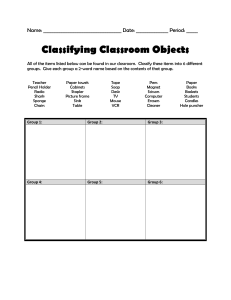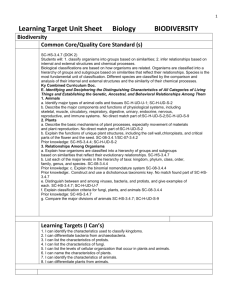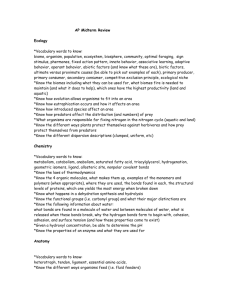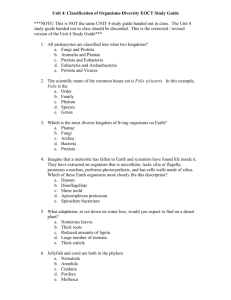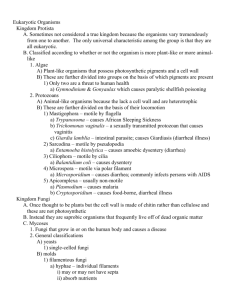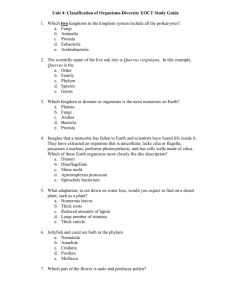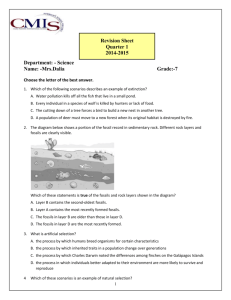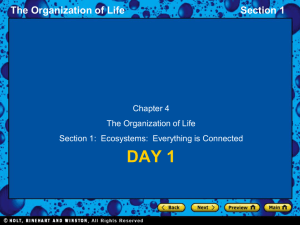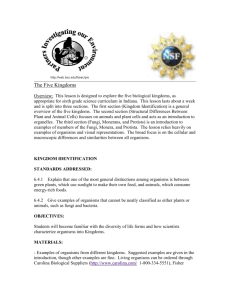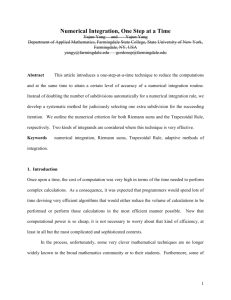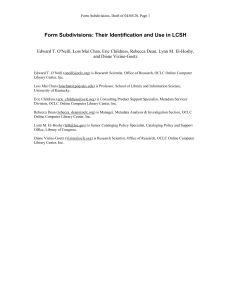Taxonomy Activity Worksheet
advertisement
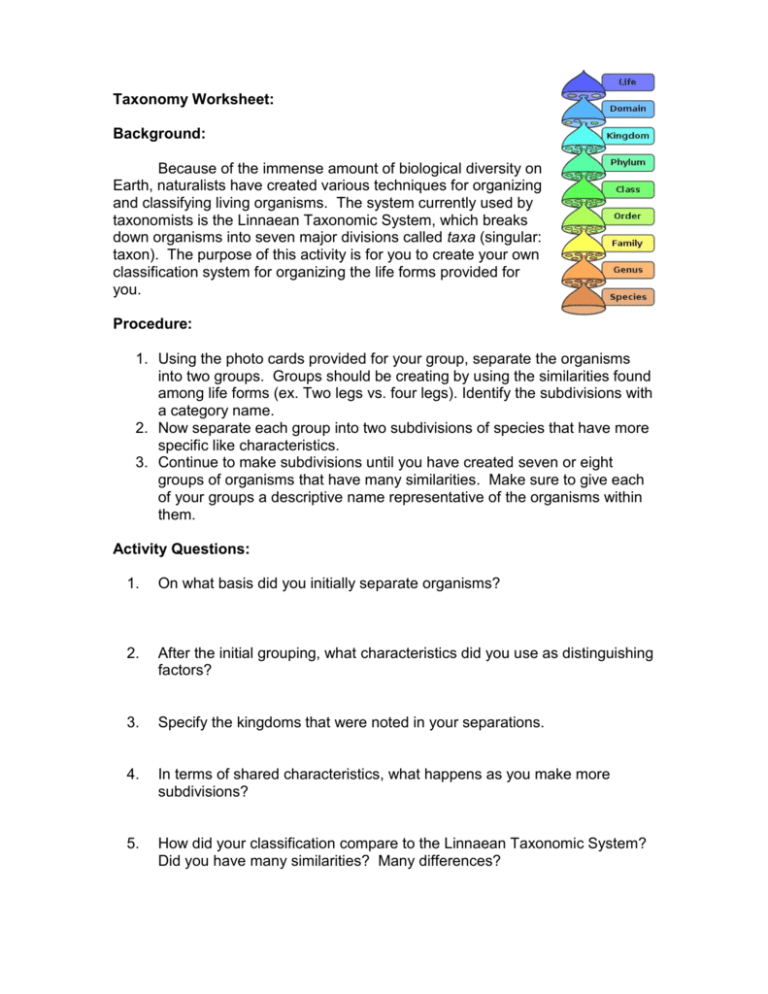
Taxonomy Worksheet: Background: Because of the immense amount of biological diversity on Earth, naturalists have created various techniques for organizing and classifying living organisms. The system currently used by taxonomists is the Linnaean Taxonomic System, which breaks down organisms into seven major divisions called taxa (singular: taxon). The purpose of this activity is for you to create your own classification system for organizing the life forms provided for you. Procedure: 1. Using the photo cards provided for your group, separate the organisms into two groups. Groups should be creating by using the similarities found among life forms (ex. Two legs vs. four legs). Identify the subdivisions with a category name. 2. Now separate each group into two subdivisions of species that have more specific like characteristics. 3. Continue to make subdivisions until you have created seven or eight groups of organisms that have many similarities. Make sure to give each of your groups a descriptive name representative of the organisms within them. Activity Questions: 1. On what basis did you initially separate organisms? 2. After the initial grouping, what characteristics did you use as distinguishing factors? 3. Specify the kingdoms that were noted in your separations. 4. In terms of shared characteristics, what happens as you make more subdivisions? 5. How did your classification compare to the Linnaean Taxonomic System? Did you have many similarities? Many differences? Key to Taxonomy Activity: List of Organisms: 2 mammals (dolphin, lion) 2 birds (penguin, sparrow) 2 fish (shark, goldfish) 1 insect (ladybug) 1 crustacean (crab) 1 worm (earthworm) 1 mollusk (octopus) 2 fungi (mushroom, mold) 1 fern 1 bryophyte 2 angiosperms (sunflower, lily) Correct divisions: (LTS) 1st division: Mobile: all animals Immobile: plants and fungi 2nd division: Vertebrates Invertebrates Plants Fungi 3rd division: warm-blooded animals cold-blooded animals inverts w/ exoskeleton (ecdysozoans) inverts w/out exoskeleton (lophotrocozoans) fungi plants with flowers (angiosperms) plants without flowers
